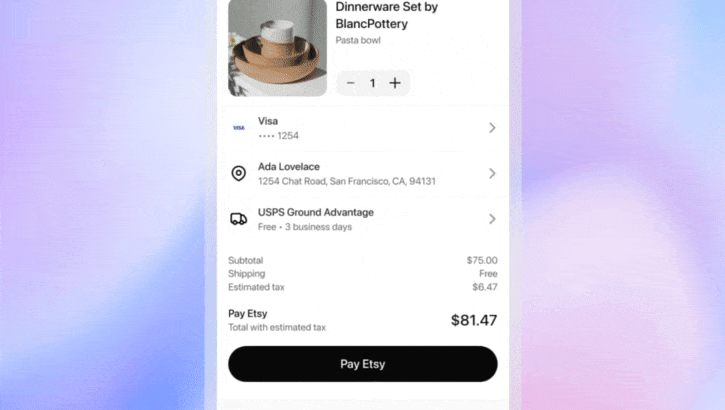The browserless fintech playbook
A practical checklist to make your product legible to AI agents and purchasable without a page load.
How to prepare your fintech for the browserless world
OpenAI just launched Instant Checkout in ChatGPT, powered by the Agentic Commerce Protocol (ACP). Shoppers in the US can already buy from Etsy inside ChatGPT, with Shopify support following. No tabs. No forms. Just chat, choose, pay and voila 🤙
It is the start of mainstream agent-native commerce.
Some stats:
ChatGPT now claims 700 million weekly active users.
AI platforms drove 1.13 billion referral visits to the top 1,000 sites in June, up 357% year on year. Early days versus Google, but the curve is steep.
The six stages of AI use (and where we are now)
Static AI - trained data only, stuck at cutoff.
AI + browsing - fetch fresh info.
Research agents - scan, summarise, compare at scale.
👉 Operate and act - complete tasks on your behalf. We just crossed this line with Instant Checkout and ACP.
Unified agent layer - memory across tools and tasks.
Personal autonomy - agents that anticipate and fulfil.
What changes for you
The classical funnel compresses. Awareness, interest, consideration and conversion increasingly live inside AI interfaces. You keep control of retention and advocacy. Everything upstream will be mediated by agents that prise facts, speed, structure and fit for purpose.
Example: “Find a great toy for my 7-year-old nephew, budget £30, fastest delivery.” The agent scans reviews, videos, forums, then finds the best price and delivery, and checks out. All inside chat.
👉 “Without the website ever opening.”
The job now: make your fintech agent-ready
Below is a concrete checklist. It is biased to what agents need, not what humans like.
1) Access
Remove walls. If an agent cannot reach it, it does not exist. Avoid “call us for details” and “create an account to view fees”.
Publish public, crawlable versions of pricing, eligibility, fees, limits, SLAs, FAQs, and constraints.
Ship a Products & Policies feed. Treat it like a merchant feed for AI: machine-readable, complete, updated hourly.
2) Speed
Aim for <200 ms on read endpoints and docs. Agents time out like humans bounce.
Move heavy logic to APIs. Pre-compute common answers and make them fetchable.
3) Structure and navigation
Mark up every important page with structured data and consistent headings. Keep URLs stable.
Offer JSON and CSV mirrors for key tables, rate cards, corridor lists, and feature matrices.
4) Information quality
Write for LLMs and humans. Short sentences, explicit labels, definition lists, FAQs, examples, edge cases. Kapa’s best-practice guide is an excellent baseline for “scraper-friendly” docs.
5) Integrate with ACP
Implement the Agentic Commerce Protocol so agents can quote, reserve, and purchase without brittle scraping. Stripe and OpenAI are co-developing ACP and have opened the spec. Start with Instant Checkout primitives even if you are not a retailer. Think “apply”, “quote”, “bind”, “pay”, “activate”.
6) Bot traffic, the smart way
You will see more automated traffic. Do not nuke the good with the bad.
Replace captchas with invisible bot detection on critical routes like signup, quote, checkout and LLM endpoints. Vercel’s BotID is built for this pattern.
7) Loyalty, brand and real-world touch
Double down on loyalty mechanics, bundles and personalised pricing. Agents will optimise for value on behalf of users.
Make your values legible. Agents will favour products that align with user preferences.
Create memorable offline moments you fully control. People still advocate based on how you made them feel.
A simple agent-readiness scorecard
Score each item 0-1. Anything <7 needs attention.
Public fees and eligibility are complete and crawlable.
Structured product feed exists
Site returns core facts via HTML without JS.
Docs follow AI-friendly writing guidelines.
Quote and pricing APIs exist and are public or partnerable.
ACP pilot is scoped and resourced.
Invisible bot protection live on critical routes.
What to stop doing
Gating prices, content and eligibility behind forms or phone calls.
Long hero copy that hides facts.
Throwing captchas at everything. Use invisible detection on the few routes that matter.
Why this matters now
OpenAI’s Instant Checkout is day one for agent-native commerce, with ACP as the common language between agents and merchants. The usage and referral data show the direction of travel. Teams that make their products legible to agents will win more often, with less spend, across more channels.
There’s so much more I want to say but I’ll stop here for now. Let me know if you have any tips or resources on this subject!
If this sparked ideas – or raised questions - I’d love to hear from you. Hit reply or DM me.
Until next time - Dom 👋
About Dom Monhardt, founder of one-fs.com
I am a French technologist and product leader living in Dubai, with 15+ years of experience in building cutting-edge and innovative digital experiences.
I am interested in the intersection of business, design, and technology and am deeply passionate about the fintech and digital banking world.




